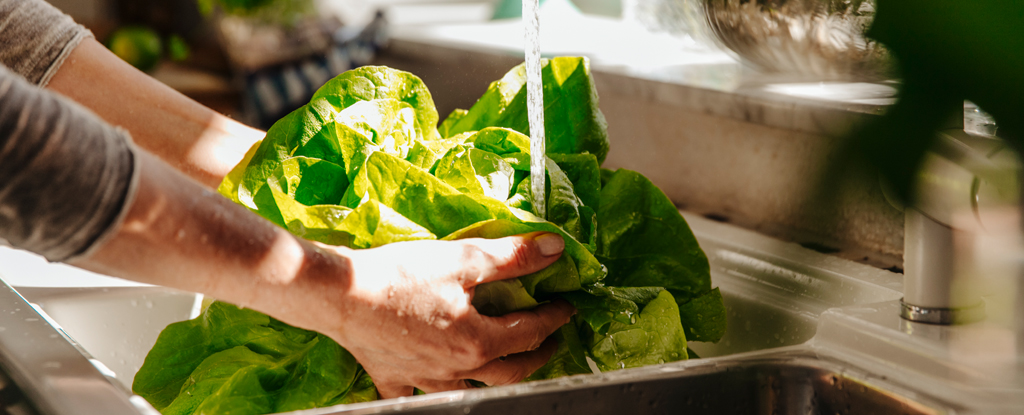Products You May Like
It begins with plants sucking synthetic contaminants up from the soil. Then insects munching on those greens get their fill of nanoplastics, followed by anything that eats them.
Just as with heavy metals in the ocean, it turns out nanoplastics – plastic particles less than one micrometer in size – can also move up the food chain. These particles are primarily the result of bigger plastic pieces being weathered down by natural processes – sometimes by the animals ingesting them.
Researchers from Europe, led by biologist Fazel Monikh from the University of Eastern Finland, demonstrated this process in a laboratory by feeding tiny 250 nm particles of polystyrene and polyvinyl chloride to lettuce (Lactuca sativa).
After 14 days, researchers fed that lettuce to black soldier fly larvae (Hermetia illucens), then gave those larvae to hungry roach fish (Rutilus rutilus) after another 5 days. Once the fish fed on the insects for 5 days, the team dissected and imaged the tissues from each food chain (trophic) level.
Because these particles are hard to detect and can be altered during their physiological journeys, researchers encased the rare element gadolinium within the tiny plastics to more easily track them. The team used a scanning electron microscope (SEM) to make sure the plastic completely covered the metal to reduce its biological influence.
The good news is that biomagnification did not appear to occur with these types of nanoplastics in the species studied. Biomagnification is when the chemicals taken up at the lower trophic levels become more concentrated as they pass up the food chain; this is a common problem caused by pollutants like mercury and polychlorinated biphenyls.
But the images revealed nanoplastics in the gills, liver, and intestines of the fish, in the mouth and guts of the insects, and accumulated in the leaves of the lettuce.
Moreover, the two plastics behaved differently as they journeyed through the food chain. The lettuce took up slightly less polystyrene, so less of this plastic flavor was passed on compared to the polyvinyl chloride.
Properties like the size, shape, and surface chemistry of the particles could all influence the different impacts they have on life, the researchers explain. For instance, some earthworms might be more likely to break down polyethylene in the soil before it gets taken up by a plant.
“Our results show that lettuce can take up nanoplastics from the soil and transfer them into the food chain,” says Monikh. “This indicates that the presence of tiny plastic particles in soil could be associated with a potential health risk to herbivores and humans if these findings are found to be generalizable to other plants and crops and to field settings.”
Microplastics, including the smaller nanoplastics, are now ubiquitous in every environment, from the deepest ocean trenches, the highest mountains, and the remote isolation of Antarctica. They’re in the food we eat, the water we drink, and the air we breathe.
Microplastics are passing through our bodies every day, but researchers say there’s no need for panic, as there are clearly no short-term, immediate impacts on us; it’s the long-term exposure and high concentration levels that remain a concern.
The particular concern about these tiny particles is that they’re small enough to pass through many more physiological barriers, unlike their larger particles of origin. Some have already been shown to cause potential toxicity in plants, invertebrates, and vertebrates.
Monikh and colleagues also demonstrate how these plastics can attract a protein cover on their surface as they pass through various life forms. How this changes their impact is completely unknown.
“Further research into the topic is still urgently needed,” Monikh concludes.
This research was published in Nano Today.
